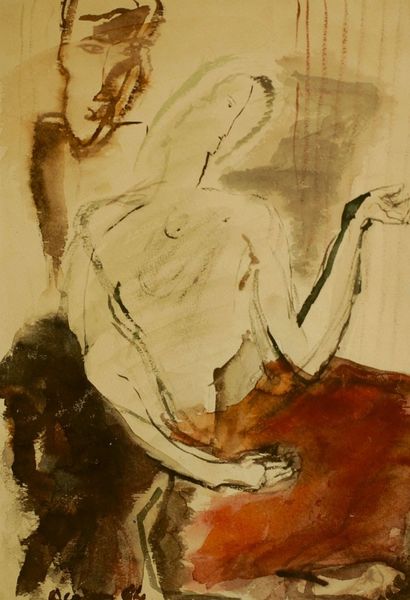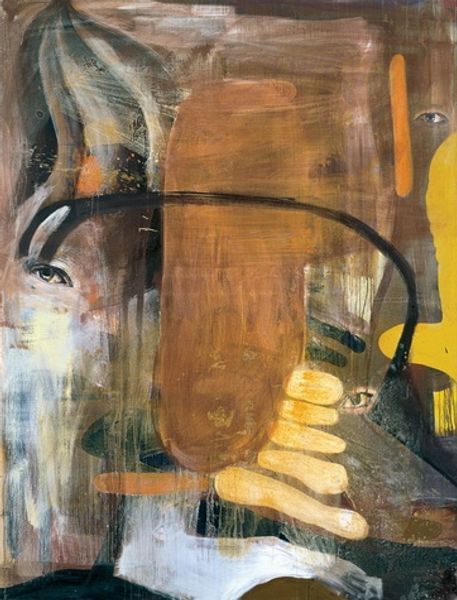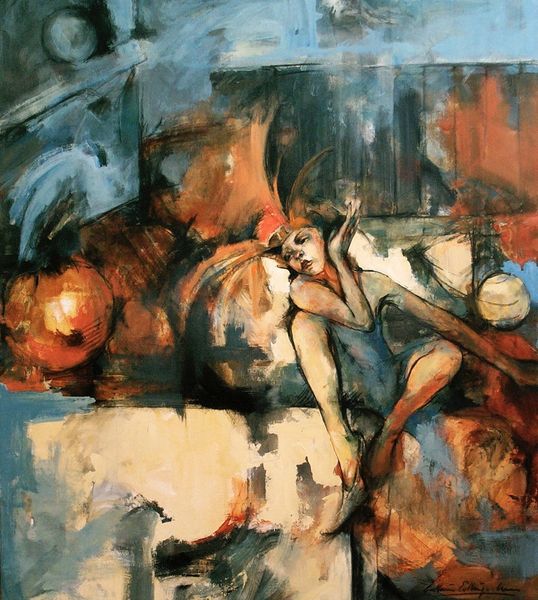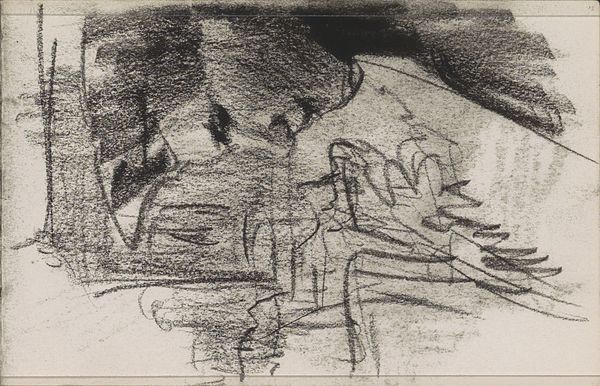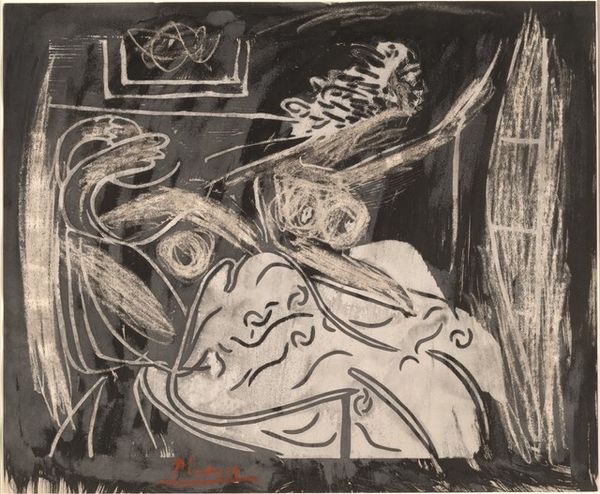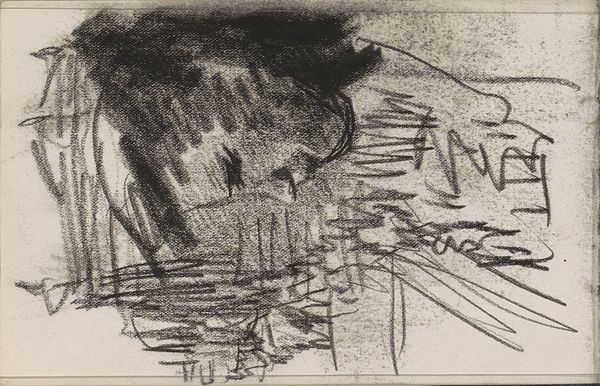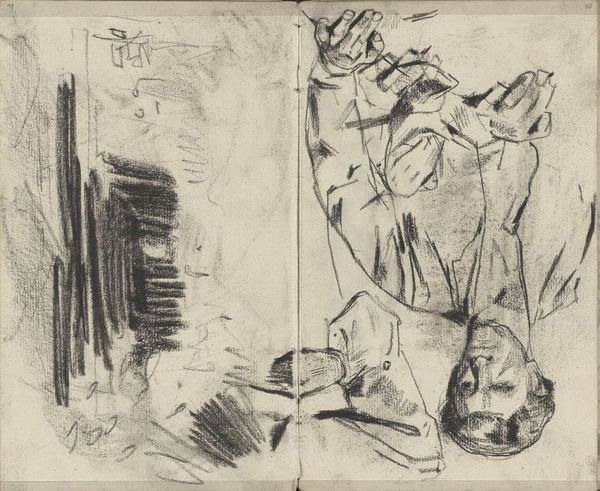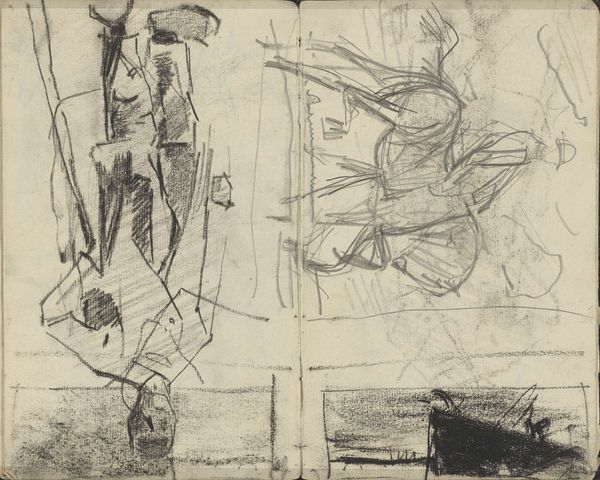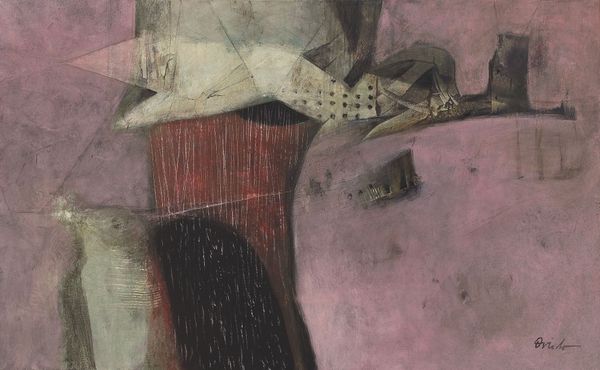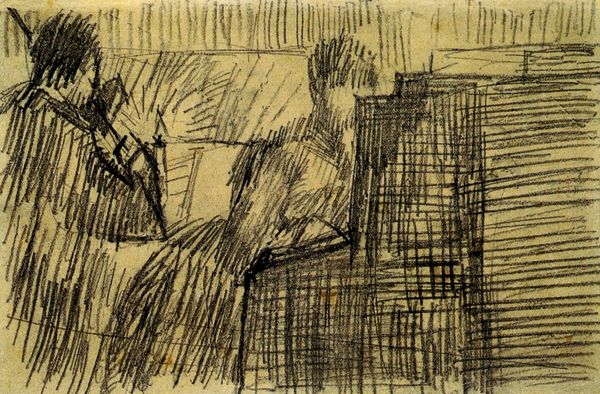
Copyright: Public domain
Edgar Degas made 'After the Bath' using charcoal and pastel on paper. Degas was interested in the effects of light on the human form, and in the relationship between the human body and the built environment. The medium of pastel lends itself perfectly to this exploration. It's a dry pigment held together with a binder, allowing for a direct, almost tactile relationship with the surface of the paper. Look closely, and you can see the marks of Degas's fingers as he blended the colors to create soft, luminous effects. But the choice of pastel also speaks to the wider social context of 19th-century Paris. Pastels were relatively inexpensive and easy to use, making them a popular choice for amateur artists. The medium was associated with femininity and domesticity, and Degas's choice of pastel allowed him to explore the intimate lives of women in a way that might not have been possible with more traditional media. In considering his approach, we can recognize that Degas pushed the boundaries of what was considered acceptable in the art world, elevating a humble medium to the level of high art.
Comments
No comments
Be the first to comment and join the conversation on the ultimate creative platform.

